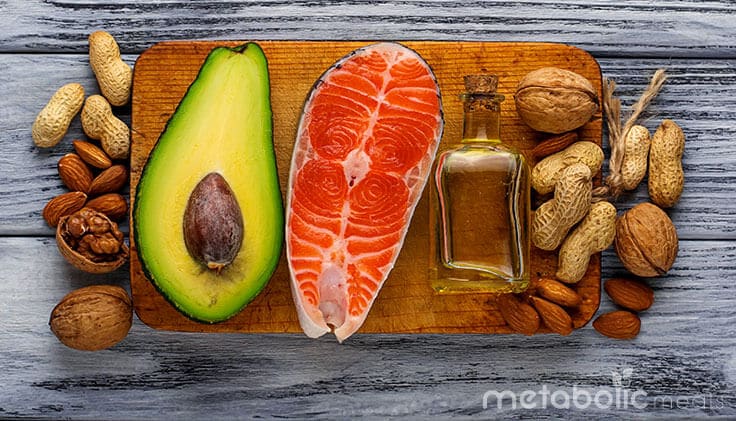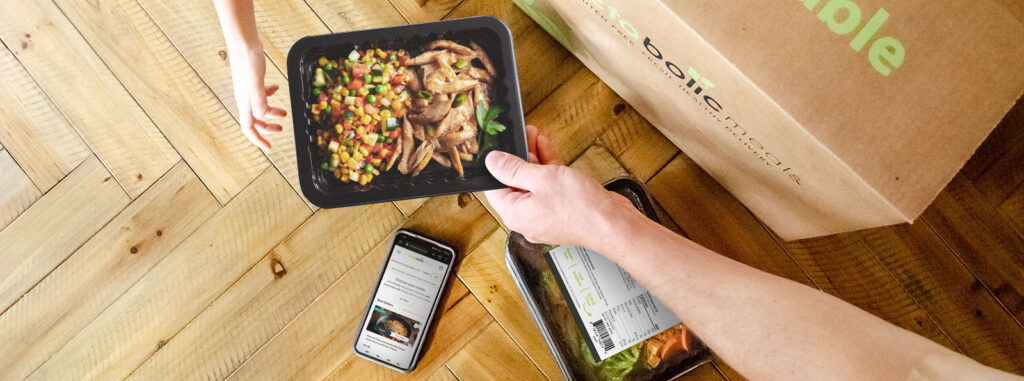ARTICLE AT A GLANCE
Three experts share their advice on crafting a well-planned diabetic meal plan:
- Embrace variety to avoid burnout on a low-carb diet
- Prepare meals in advance that focus on ingredient quality
- Monitor total calories and meal timing to support weight loss
Crafting a Diabetic Meal Plan That Works For You
According to a CDC report, more than 100 million adults in America suffer from either diabetes or prediabetes. There are only about 325 million United States citizens in total — so that’s quite a large percentage. Without treatment, diabetes can lead to an increased risk of stroke, heart problems, and kidney and nerve damage.
Fortunately, Cambridge University recently published a study concluding that higher intakes of plant and egg proteins can help some men prevent Type 2 diabetes. If you already have it, then ensuring that your meal plan contains the same type of proteins can help improve your ability to regulate your blood sugar.
However, crafting a good diabetic meal plan — and sticking to it — takes more than just switching out animal proteins for plants and eggs. A good diabetic meal plan consists of everything your body needs to function optimally and to prevent your blood sugar from spiking. Those needs are different for everyone, which is why the “best” meal plan is, too.
Today, three of our experts chime in on how you can pinpoint your specific dietary needs and craft the diabetic meal plan that works best for you while avoiding some of the most common dietary mistakes.
From Alan Bishop:
When diagnosed with diabetes, many people are put on carbohydrate-restrictive diets. This is effective because, typically, the rule of thumb is that the fewer carbs you consume, the less your blood sugar will spike. However, people often make the mistakes of underestimating their carb counts and inadvertently drinking too many simple sugars. For example, a 32-ounce sports drink contains nearly 60 grams of sugar, and a 24-ounce Frappuccino can carry more than 80 grams.
Avoid these mistakes by measuring each serving with a food scale and avoiding all sugary beverages. While each case is different, evidence points to sustained long-term improvements in blood sugar management when carbs are held to under 90 grams per day. Depending on your specific needs, your exact count might range from 20 to 100 grams of carbs.
While 20 grams of carbs per day is great in theory, it can actually be quite difficult in practice. Sitting down with a healthcare provider and developing a plan you can stick with is key.
My top advice for those looking to improve their diabetes through a diet change is to embrace variety as a way of avoiding burnout on a low-carb diet. You should include a new vegetable every day, cook with at least one different spice every day, and try a new source of protein every week — think bison, quail, duck, elk, etc. Many people complain about the monotony of low-carb diets, but they fail to explore the unique flavors that new and different foods offer.

Finally, I’d like to encourage anyone starting a diabetic meal plan to step out of their comfort zones and ask for help. Many people don’t know where to start when it comes to making meaningful change, and it is never a bad idea to hire an expert to get you started. There’s nothing more frustrating than being hungry, tired, and burnt-out without seeing results. Hire someone with the expertise to ensure your efforts are rewarded.
From Jason Barbour:
Lack of preparedness is the biggest mistake I see when people start a diabetic meal plan. While it’s true that some people really don’t know which foods to avoid, I believe that most do understand the basics. When people have access to healthy foods, they tend to eat them. When they’re in a rush, they reach for what’s convenient. As the saying goes, “If you fail to plan, you plan to fail.”

Instead, plan for success by prepping your meals ahead of time, using a healthy meal delivery service, and reviewing menus beforehand when you eat out. While I believe that about 20 percent of nutrition is individual in nature — for example, genetics can largely determine exactly how many carbs you need, how well you tolerate certain foods, and how efficiently you burn fat — some rules apply to the majority of people. In order to control your blood sugar, raise your insulin sensitivity, and improve your overall metabolic profile, follow these important steps:
1. Stick to pasture-raised proteins.
Meat from animals raised on their natural diets contain more omega-3 fatty acids that help lower inflammation and raise insulin sensitivity. Protein is also very thermogenic and aids in fat loss.
2. Balance your fats.

The typical Western diet contains too many inflammatory omega-6 fatty acids from canola, cottonseed, and corn oils as well as commercially farmed meats raised on grain and soy. Replace these fats with extra virgin olive, avocado, macadamia, and fish oils when cooking.
3. Keep your total carbs under 100 grams per day and eat at least 25 grams of fiber each day.
This means that most of your carbohydrates will need to come in the form of vegetables. You might be able to handle lower-glycemic starches such as sweet potatoes and low-fructose fruits such as berries if you space them out and remain mindful of your total carbohydrate allowance. Aside from keeping your blood sugar in check with this strategy, you’ll also be consuming beneficial prebiotics, which your gut will be thankful for.
Finally, measure your blood sugar regularly and write the results in a food log to fully understand what foods impact your blood sugar the most. It’s common knowledge that high-sugar foods and processed goods should be strictly limited, but as I said before, individual nutrition is important as well.
For instance, I’ve read research that claims people with PPAR-y genetic polymorphism have an increased risk of diabetes and cardiovascular issues when they consume too much saturated fat — particularly when the amount of saturated fat exceeds their monounsaturated and polyunsaturated intake. In other words, while most of the population would see only a small blood sugar increase after eating a ribeye, a portion would have a much stronger reaction. Testing regularly can give you an extremely valuable glimpse into your personal nutritional needs and help you avoid these types of situations.
From Zac Bell:
I often see people make the mistake of failing to pay attention to total calories and total carbohydrate intake per meal. This is an important step if you have diabetes because it helps you control your blood sugar throughout the day, especially if you are on any medications that must be consumed with carbs. If you have Type 2 diabetes, insulin resistance might not be the only issue you’re facing, however.
The health burden of being overweight can contribute to many negative health consequences. By losing weight and becoming more physically fit, not only can you become more sensitive to insulin and more able to manage, if not reverse, your Type 2 diabetes, you can also improve many aspects of your overall health. The overall health and fitness improvements that come with losing weight will depend on monitoring overall calorie and macronutrient intake, not just carbs. Paying attention to protein and fats alongside carbohydrates can help lead to better overall success.
As with any nutritional approach, I think the best meal plan for long-term success is the one you can stick to. Monitoring the quality of your carbs will make a huge difference. If you’re following a low-carb diet, it’s important that those carbs come from fibrous vegetables and fruits lower in sugar. Incorporating high-quality lean protein with fibrous carbohydrate sources will help keep blood sugar spikes to a minimum.

The combination of protein and fiber will also have a higher thermogenic effect, meaning you might see a bump in your metabolic rate. The ultimate goal should be to stay in good glycemic control over time to help you become more sensitive to insulin and bring down fasting blood sugar and insulin levels.
While keeping your calories in control, spreading your meals out throughout the day might help with hunger and blood sugar control. I don’t necessarily mean having eight small meals throughout the day; I mean consuming similar portions during each meal and eating them a few hours apart.
In fact, adding in intermittent fasting might help you become more insulin-sensitive as well. Many people on an intermittent fasting plan choose to eat during an eight-hour window each day and then fast the remaining 14 hours. This allows your blood sugar and insulin to fall to baseline because you are not constantly in a fed state.
Combining bouts of intermittent fasting with controlled calories and high-quality proteins and fibrous carb sources might be a double whammy for success with Type 2 diabetes from a nutritional approach. Make sure to include high-quality fats in your diet from sources like fish, avocado, and olive oils. Quality nutrition with an emphasis on lower amounts of high-quality carbs combined with consistent exercise is a recipe for success.
Final Thoughts
Preventing or managing diabetes takes knowing exactly how your body reacts to all foods. That’s because the best meal plans are those that are tailored to those reactions and designed to optimize a healthier eating and lifestyle. Get started on the right foot and learn more about the variety of meal options that adhere to your specific needs by speaking with one of our experts today.






